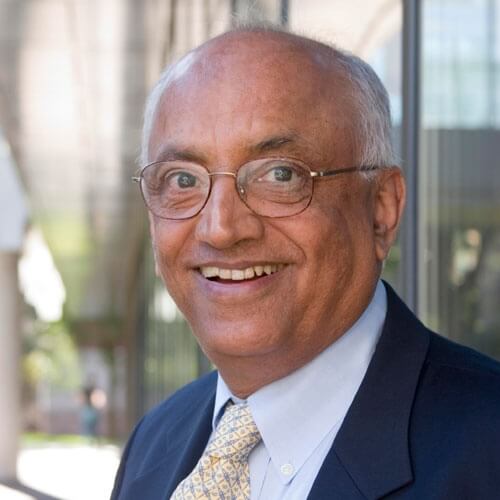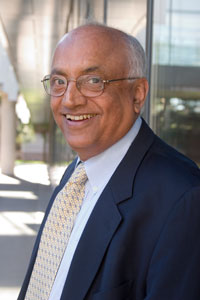News
Venkatesh "Venky" Narayanamurti is the Benjamin Peirce Professor of Technology and Public Policy at SEAS; Professor of Physics; and Director of the Science, Technology, and Public Policy Program at the Belfer Center, Harvard Kennedy School.
The following is an excerpt from an op-ed that appeared in the Los Angeles Times on March 26, 2012.
We all know the United States has a jobs crisis. President Obama further acknowledged it when he made manufacturing a top priority in this year's State of the Union address. He has his eye set on fixing the tax code to keep jobs onshore, training young people to fill them,reforming immigration to retain workers once trained and setting new standards to drive innovation and create more jobs. That's all good news for the nation; it's practically an industrial policy.
In all this, though, there's a worrisome undercurrent. The United States didn't just suddenly find itself in this crisis. Our nation has worked long and hard to get here, after decades of so-called free markets while other nations tilted the playing field, of American jobs going offshore,of politicians, economic advisors and industrialists finding common cause in letting manufacturing move to Asia and Latin America.
Jobs fled to cheaper labor markets, unprotected by U.S. health and safety standards. And they took with them wealth. Seventy large U.S. firms —including Apple, Microsoft, GE and Pfizer — hold $1.2 trillion in cash overseas, according to a recent Bloomberg survey. Much of that money is unlikely ever to be repatriated to the United States because of tax laws.
So U.S. industrial policy —or the lack of it — has made many nations rich in jobs, short on worker safety and loaded up on cash.
But that's the least of it. The United States also has put at risk its greatest asset: the return on its intellectual capital. We have let China learn by doing, South Korea innovate by manufacturing, India build new capabilities in design and research and development — much of it on the back of initial American innovation.
With manufacturing gone to China, for example, R&D followed Apple to Foxconn. Applied Materials set up a major R&D shop in China, where solar cells are being manufactured. GE, Texas Instruments, Cisco and others established major R&D and design centers in Bangalore, India.
Why? Because you can't do R&D offshore from a distance. The"look-see-do" of innovation depends on close ties to the manufacturing process. Proximity to manufacturing is the key to other higher-value activities — design, engineering and R&D. And with that, jobs.
The entire article is no longer available.
Cutting-edge science delivered direct to your inbox.
Join the Harvard SEAS mailing list.
Scientist Profiles
Venkatesh Narayanamurti
Benjamin Peirce Professor of Technology and Public Policy, Engineering and Applied Sciences, and Physics, Emeritus

